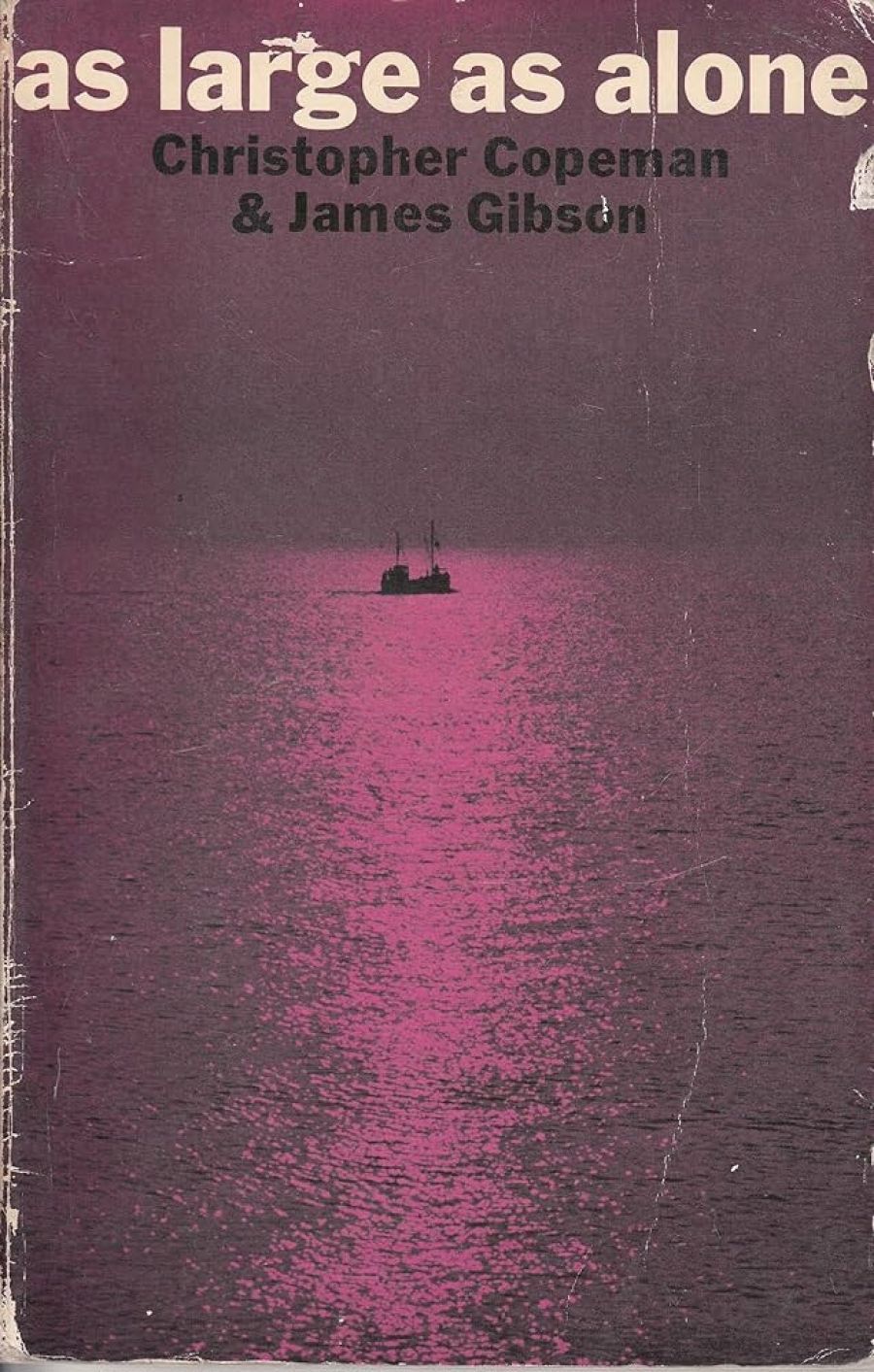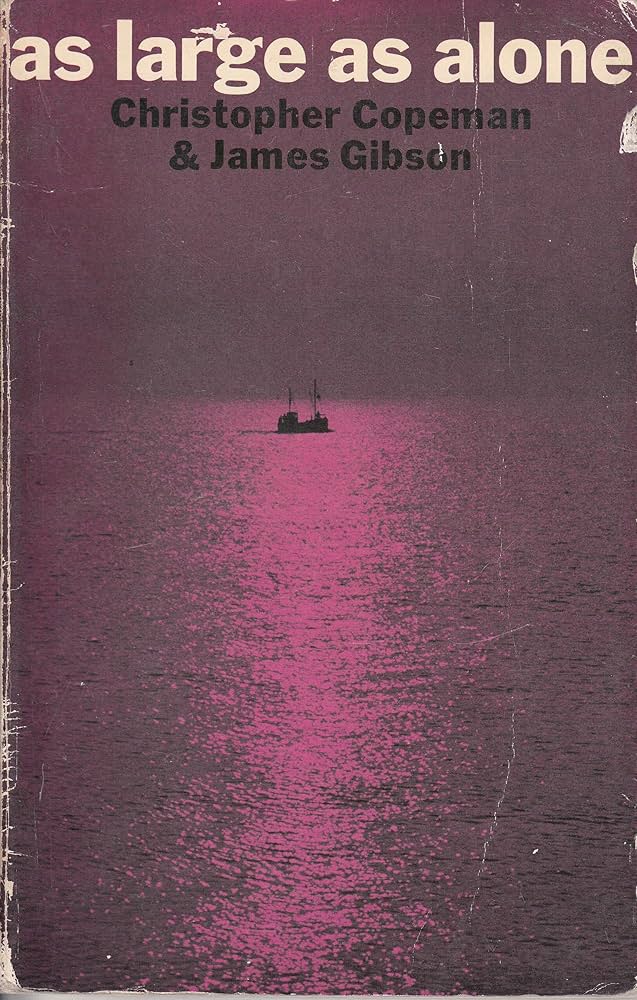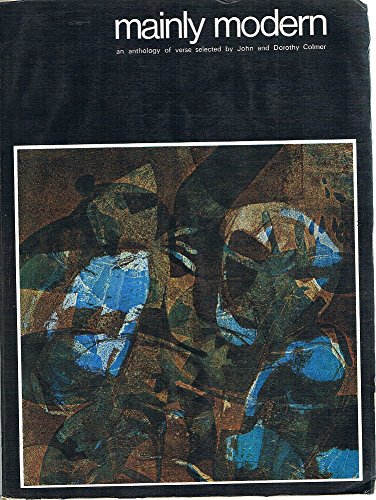
- Free Article: No
- Contents Category: Language
- Review Article: Yes
- Article Title: In need of Intensive Care
- Online Only: No
- Custom Highlight Text:
Soon after our Dip.Ed. begins, I solemnly warn my students that, when they go out into schools for their English teaching practice, they will be asked to teach poetry: indeed, in many cases, the poetry they present will be the only poetry those classes will have for the whole year. They smile and even laugh indulgently, and we talk about why teachers wouldn’t want to teach poetry. It’s a pleasant academic point. But when the students come back in late April after some weeks in schools, their eyes are wide and they say, ‘It’s true. We have to teach the poetry!’.
- Book 1 Title: As Large as Alone
- Book 1 Biblio: Macmillan, 110p., $4.50, 333 119630
- Book 1 Cover Small (400 x 600):

- Book 1 Cover (800 x 1200):

- Book 2 Title: Mainly Modern
- Book 2 Biblio: Rigby, 420pp., $7.50
- Book 2 Cover Small (400 x 600):

- Book 2 Cover (800 x 1200):

- Book 3 Title: Language in Literature
- Book 3 Biblio: Macmillan, 402p., $8.95, 333 175 581
What, then, is the status of literature in our secondary schools? To begin to answer this question we must go back to the l960s, when it was discovered that certain children were not cleverer than others but merely different. It was therefore both ideologically comfortable and educationally sound to teach all children together. But if you teach all children together, it is clear that not all teaching material will have appeal: for example, Shakespeare will not do, because he wrote ‘in old English’ and he is not easy to understand. The real problem with Shakespeare is that he cannot be seen immediately to be relevant. Relevance became the touchstone. In the great cities like London and Manchester, Sydney and Melbourne, school English programs began to address themselves to magazine and newspaper features and to short stories which dealt with poverty and crime, for this kind of material could be seen to be relevant to the lives of young people. Imperceptibly literature (whatever that is) was eased into a corner of the classroom.
But also in the 1960s it was discovered that children use language. They speak language. And teachers were told by linguists and by educationists that it was about time that they knew something about language. Now English teachers love and need slogans as much as anyone else. From the linguists and neo-linguists they took on words and phrases like ‘restricted code’, ‘transactional language’, ‘spectator role’. The English teachers in the vanguard set up working titles in the early 1970s like James Britton’s Language and Learning, Andrew Wilkinson’s The Foundations of Language and Jones and Mulford’s Children Using Language. All recent English teachers’ conferences in Australia, either at regional and state or at a national level, have been primarily concerned with language use in school. A whole new industry in publishing about classroom language has grown up. And this year saw the appearance in England of a brand-new professional journal entitled Language for Learning. I do not deny the importance of language in learning; all I am claiming is that the emphasis I have just referred to has eased literature further into a corner of the classroom.
The status of literature in our schools, then, is low. The texts that many teachers and pupils work from are variations upon the source book. This is often a rag-bag of photographs, cartoons, letters to editors, magazine articles and extracts from novels; there are often poems of the nursery rhyme of limerick variety. The presentation is cheerful, bright and razz-a-matazz. The vitality and the energy that such books often release in classrooms under the guidance of a gifted teacher is prodigious and much to be preferred to a laboured progress through Silas Marner. Nevertheless, it seems to me no way to encourage reading stamina and this is what we have lost from our schools.
It is almost impossible to say what literary material is being used in our secondary schools. There is not much poetry being treated, of that I am certain. It is interesting to note, therefore, that (in my opinion) the two best poetry books on the market are Australian-produced. They are Copeman, Gibson and Murdoch (eds) As Large As Alone, Macmillan, 1971 and John and Dorothy Colmer (eds) Mainly Modern. Rigby, 1969 and reprinted several times. I have used both anthologies in recent years. The first is well suited to junior secondary classes: there are photographs and the range is wide, from fun poems to Ted Hughes’ ‘Thistles’. The second is in my experience extraordinary: I have known pupils who used it three years running and never exhausted it or grew tired of it. It is ‘mainly modern’ and, unlike As large As Alone, has arranged its collection by themes like ‘Time’, ‘War’, ‘Song’, ‘Love’ and ‘Animals’, and belongs somewhere in Years 10 thru’ 12 (as the Americans say).
English publishers still demonstrate an almost pathetic belief in the market-value of the short story collection. Harrap have in the past few years been producing The Pegasus Library, a series of short story anthologies from single authors; for example Doris Lessing and Ray Bradbury and a joint volume of Edgar Allan Poe and Ambrose Bierce (‘Who’s Ambrose Bierce?’ ask seventy-five per cent of our English teachers). The series is obviously intended to be used as set texts: each has a critical note and sets of questions but the whole enterprise seems to me to be a mere gesture to literature work – your short story fits into your English period.
Ward Lock Educational, also publishers of short story collections for schools, have a series called The English Project. The Project is in three stages, or levels, with six anthologies per stage, with thematic titles like ‘Other Worlds’, ‘Danger!’, ‘Openings’, ‘Identity’; and ‘Society’. In Stage Three is Bonds, edited by Pat D’Arcy, a well known figure in England’s National Association for the Teaching of English. Bonds is an attractive book, with lots of photo-journalism (lovers on a bench, a calf being born), black and white reproductions of paintings by Sickert and Nolan, drawings by Picasso and photographs of a range of sculpture from Fourth Century Etruscan to Brancusi. The literature? There are poems by Vosnesensky, Prevert, Larkin, Carafy and R. S. Thomas, extracts from Steinbeck and de Beauvoir, stories by Boll and Neruda. There is that terrifying ‘The Stone Boy’ by Gina Berriault and John Updike’s delightful but highly sophisticated ‘Wife-Wooing’. To nip through Bonds could be to believe that ‘literature’ is alive and well in our schools. But I would defy all but the most brilliant teacher with an able class to ‘make meanings’ of the Bonds material; it is superfine and richly cultivated afghan and matching jogging suit reading.
Literature lives at best an uncertain life in school. Consider, for example, two more Australian-devised and Australian-produced contributions to its life: David Mallick et al. (eds), The Growing Green: a language through literature course, Heinemann Educational Australia. 1976 and Sue Woolfe, Language in Literature, Macmillan Company of Australia, 1975, with Supplement 1977-78, pub. 1977. Note the sub-title of the first and the title itself of the second: language (whatever that is) is pre-eminent, or at least must seem to be so. The Growing Green has no themes but three divisions: poetry, drama and short story. There are not only single poems but also groups of poems by Blake, Miroslav Holub and D. H. Lawrence. There are eight extracts from Shakespeare, together with O’Neil, Pinter and others. The short stories include two by de Maupassant. The suggestions for follow-up work are very good and, I suspect, well tried. Language in literature may be characterised by the following exercises: ‘What characteristics of spoken English are demonstrated in the following passage from The Caretaker?’; ‘Summarise and comment on the following argument used by Dr Stockmann in An Enemy of the People’ and ‘Read the following poem by John Donne...The sonnet is structured on paradoxes. What paradoxes can you detect?’.
There is much argument in medical circles concerning death. A patient in a coma for seventeen months is not strictly dead. Literature in schools is not strictly dead. I think only one thing is maintaining the prospect of eventual recovery. This is the encouragement of the reading of extended fiction, the putting before young people the possibilities of experience through the novel.
We have come beyond Kidnapped and Great Expectations for young readers. Yet we have still to cope with the New Traditionalism: by this I mean the regular study of The Sun on the Stubble, Lord of the Flies and To Kill a Mockingbird. But I think that the most hopeful sign for literature is the growing number of teachers who are concerned for reading for pleasure. These are the teachers who cull the superabundant harvest of paperback issues and come up with Patricia Wrightson’s I Own the Racecourse!, Mollie Hunter’s A Sound of Chariots, Maria Wokjciechowska’s Tuned Out and Betsy Byars’ The Summer of the Swans. For example, the Macmillan Company of Australia are to be congratulated for selling up Globe Books to re-issue titles like What It’s All About and Incident at Hawk’s Hill, Penguin (Puffin) and OUP paperbacks need no introduction.
So there is the status of literature in our secondary schools. Or at least one person’s view of it. I think it not unreasonable to make a judgement on the evidence both of texts published and texts used. Poetry anthologies come rolling off the presses month by month, but it seems they are scarcely used in any thorough-going way. The New Traditionalists still read short stories aloud around the class and mumble about them but little more. Except for a radical here and there who sets Williamson or Buzo, drama is still Ibsen, Shaw and Shakespeare or nothing. Yet teachers’ interest in and knowledge about fiction for young people is slowly growing.
Of course it is possible to point to imaginative work going on. But I am claiming that literature’s heartbeat is faint in most schools and I find that acutely depressing.


Comments powered by CComment